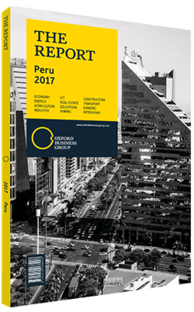Recent and upcoming reforms transforming capital markets in Peru
Broadly speaking, the government of President Pedro Pablo Kuczynski has been working on two broad categories of capital market reform. The first is a series of changes introduced during the 90-day period running up to January 2017, when the president had special fast-track authority to approve decree laws. Among the 112 measures announced in that period were several designed to help capital markets indirectly, for example, by simplifying taxes and reducing red tape. The second is a broader reform of the market, with a focus on increasing its size and bringing regulations more in line with those of the three other Pacific Alliance members.
Fast Track
Three of the 112 measures were directly related to capital markets. One established that shares and other securities should have equal treatment and be exempt from capital gains tax under certain conditions. The second introduced factoring, which is a financial market for buying and selling company invoices and can give small and medium-sized enterprises an opportunity to improve their cash flow. As with other papers, these securities pay a single 5% capital gains tax. The third measure authorised trading in fideicomisos de inversión y bienes raíces (FIBRAS), a type of security similar to US real estate investment trusts. The new FIBRAS are also subject to a 5% capital gains tax, but as with other securities, the more liquid versions of these instruments are exempt. Liquidity for this purpose is defined as having traded on the Lima Stock Exchange (Bolsa de Valores de Lima, BVL) for a minimum of 27 days out of the previous 180. The tax exemption is also conditional on transactions not exceeding 10% of the total market for the security in question, a measure designed to make Peruvian capital markets more liquid.
Upcoming Changes
The government also announced its intention to introduce an exchange reform bill in 2017. Speaking in November 2016, Alfredo Thorne, minister of economy and finance, said this wider reform would be “institutional”, and designed to increase competition and the attractiveness of market players such as brokers, investment funds and investment banks. “Part of the problem is that our capital markets have been designed as an extension of banking, and have not developed their own dynamic,” he said.
One of the aims is to strengthen brokerage houses, known locally as sociedades agentes de bolsa, and make them more accessible to smaller investors who might simply be putting their money into savings at present, earning a 7% rate of return in local currency terms. Thorne wants to encourage smaller savers to consider investing in the stock exchange, which might be achieved if brokers were to offer packages with higher-yield/lower-risk products aimed at that market segment. Thorne also stated his interest in the possibility of public sector enterprises issuing shares on the BVL.
Wider Reform
Other officials have given further insights into the thinking behind wider stock market reform. In October 2016 at an economic policy forum organised by the Association of Capital Markets Business Promoters, Claudia Cooper, deputy minister of economy, said the overall aim was to increase the size of the stock market and bring the regulatory framework in line with the standards of the Pacific Alliance, whose four members are Chile, Colombia and Mexico, as well as Peru. One idea officials are working with is a system to “register, regulate and assess the performance” of financial advisors.
The government is also bringing Peru in line with the US Foreign Account Tax Compliance Act, which requires countries share financial information with the US Internal Revenue Service on accounts held in their jurisdictions by US citizens or companies.
Cooper added that regulations currently being enforced by the capital markets regulator were excessively complex. These would be reviewed, bearing in mind that existing regulations have tended to be more favourable to banking than to capital markets. Officials are also reportedly looking at ways of creating a more level playing field between banks and the stock market.
You have reached the limit of premium articles you can view for free.
Choose from the options below to purchase print or digital editions of our Reports. You can also purchase a website subscription giving you unlimited access to all of our Reports online for 12 months.
If you have already purchased this Report or have a website subscription, please login to continue.

